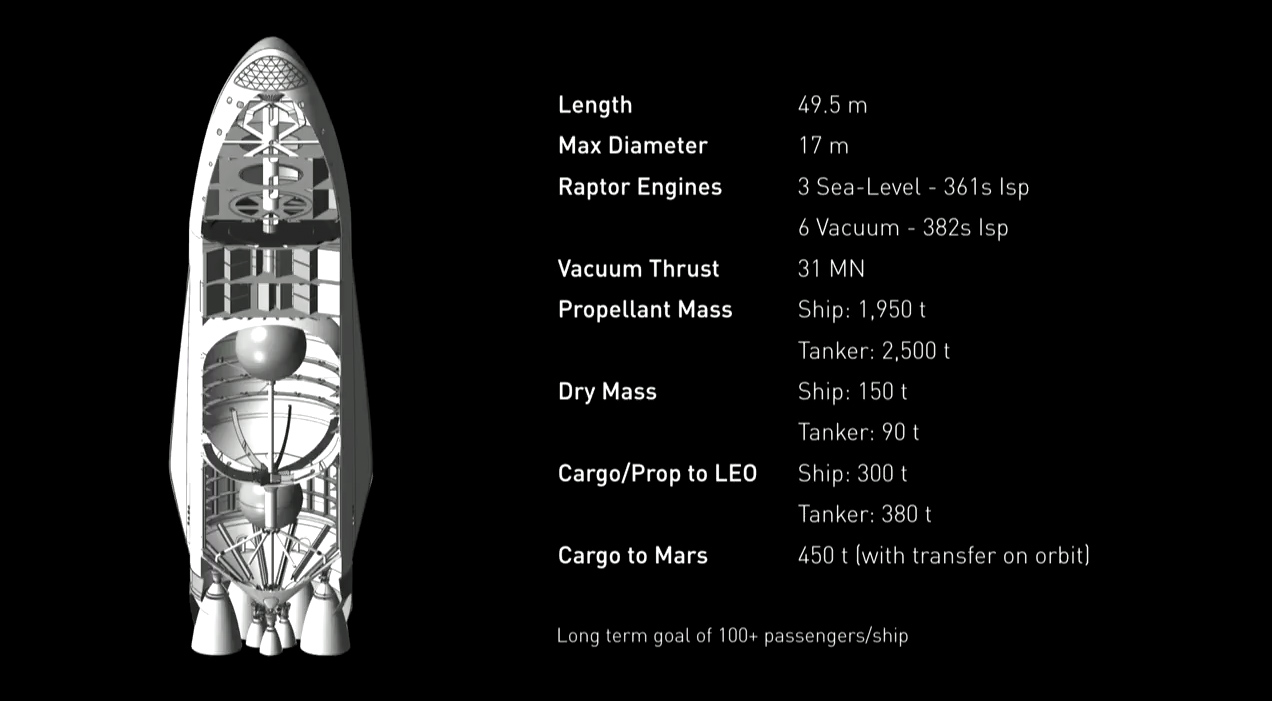SpaceX's Mars Colony Plan: By the Numbers

On Tuesday (Sept. 27), SpaceX founder and CEO Elon Musk unveiled the company's plans for colonizing Mars.
SpaceX aims to help establish a permanent, self-sustaining city on the Red Planet using the company's proposed Interplanetary Transport System (ITS), which will pair the most powerful rocket ever built with a big, crew-carrying spaceship, Musk said.
Here's a look at the ITS, and SpaceX's broader Red Planet plans, by the numbers. [SpaceX's Interplanetary Transport for Mars in Images]
10 billion: The amount, in dollars, that it would cost per seat to send people to Mars using currently available technology, according to Musk. He said the ITS could lower that ticket price to $200,000, and perhaps all the way down to $100,000. ($10 billion is also the total amount that SpaceX expects to spend on its Mars-colonization efforts in the coming years.)
1 million: The number of people SpaceX hopes to transport to Mars using the ITS over the next 50 to 100 years.
13,033: Liftoff thrust, in tons, that the ITS booster will generate. That's 3.6 times more thrust than NASA's iconic Saturn V moon rocket— the most powerful booster ever to fly — was able to produce, Musk said.
2024: The year in which ITS could begin crewed flights to Mars, if everything goes perfectly. But SpaceX's first Red Planet mission should come sooner; the company aims to launch one of its uncrewed Dragon capsules toward Mars in 2018, to test out technology ahead of the human missions. This "Red Dragon" mission will use SpaceX's Falcon Heavy rocket, not the ITS booster.
Breaking space news, the latest updates on rocket launches, skywatching events and more!
SpaceX also plans to mount Mars missions every 26 months after Red Dragon takes off, regardless of when ITS comes online, to establish a regular cargo route that takes scientific experiments to the Red Planet. (Earth and Mars align favorably, allowing interplanetary missions, just once every 26 months.)
1,000: The minimum number of ships SpaceX aims to send to Mars at every opportunity, once the ITS is fully up and running.
400: The height of the stacked ITS duo, in feet (equivalent to 122 meters). The Saturn V topped out at 365 feet (111 m). Separately, the ITS booster and the interplanetary ship that launches atop it will be 254 feet (77 m) and 162 feet (50 m) tall, respectively.
300: The amount, in tons, that the reusable ITS booster will be able to launch to low Earth orbit (LEO). The Saturn V could loft 135 tons to LEO, Musk said. (An expendable version of the ITS would have a 550-ton LEO capacity, he added, but SpaceX's Mars-colonization architecture calls for repeated reuse of the ITS booster and spaceship.)
115: The initial average length, in days, of the trip from Earth to Mars aboard the ITS ship. These ships would be launched to Earth orbit atop the ITS booster and then zoom to Mars under their power when the time was right. The trip could be as short as 80 days depending on exactly where Earth and Mars were at the time of departure, said Musk, who added that he envisions eventually slashing the trip time to just 30 days or so.
100: The minimum number of passengers carried aboard each ITS ship, meaning it could take 10,000 flights to get 1 million people to Mars. But the ships may end up transporting about 200 people apiece, Musk said.
51: The total number of Raptor engines used by each ITS stack. The rocket will carry 42 Raptors, while nine will power the ship. (Raptor, the next-generation engine SpaceX is developing, is about the same size as the company's workhorse Merlin engine but three times more powerful, Musk said.)
20: The maximum amount of time, in minutes, between the launch and landing of each ITS booster. These rockets will touch down softly at their launchpad — currently envisioned to be Launch Pad 39A at NASA's Kennedy Space Center in Florida — and will be quickly readied for another liftoff.
12: Number of people who have set foot on a world beyond Earth to date. All 12, of course, were Apollo astronauts who walked on the moon between 1969 and 1972.
Follow Mike Wall on Twitter @michaeldwall and Google+. Follow us @Spacedotcom, Facebook or Google+. Originally published on Space.com.

Michael Wall is a Senior Space Writer with Space.com and joined the team in 2010. He primarily covers exoplanets, spaceflight and military space, but has been known to dabble in the space art beat. His book about the search for alien life, "Out There," was published on Nov. 13, 2018. Before becoming a science writer, Michael worked as a herpetologist and wildlife biologist. He has a Ph.D. in evolutionary biology from the University of Sydney, Australia, a bachelor's degree from the University of Arizona, and a graduate certificate in science writing from the University of California, Santa Cruz. To find out what his latest project is, you can follow Michael on Twitter.

